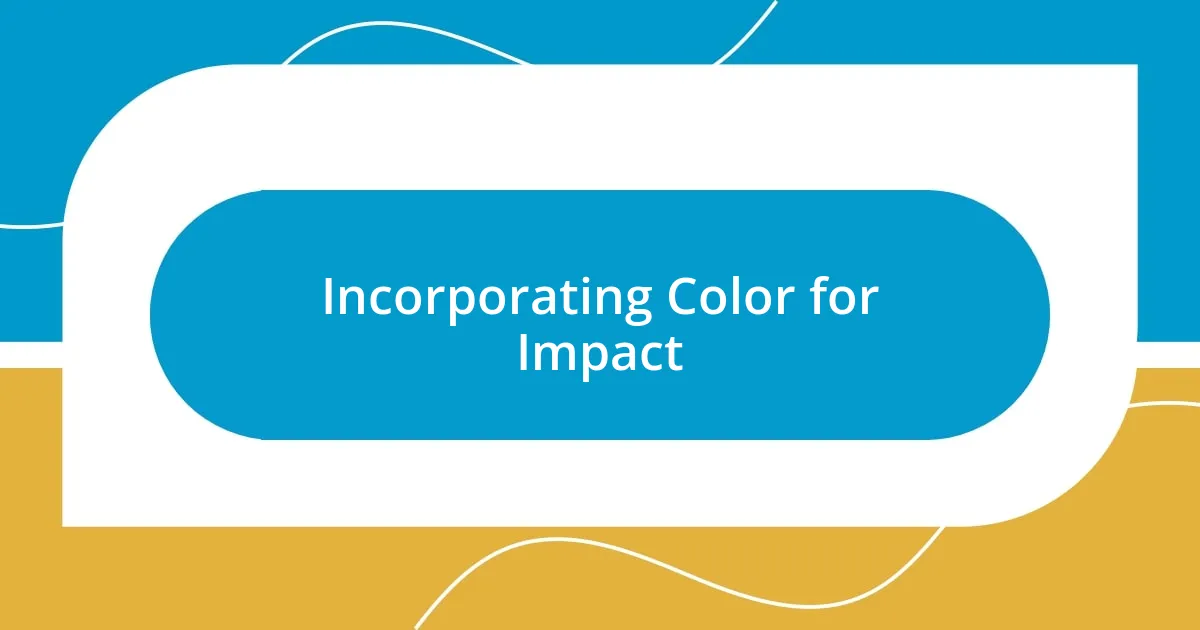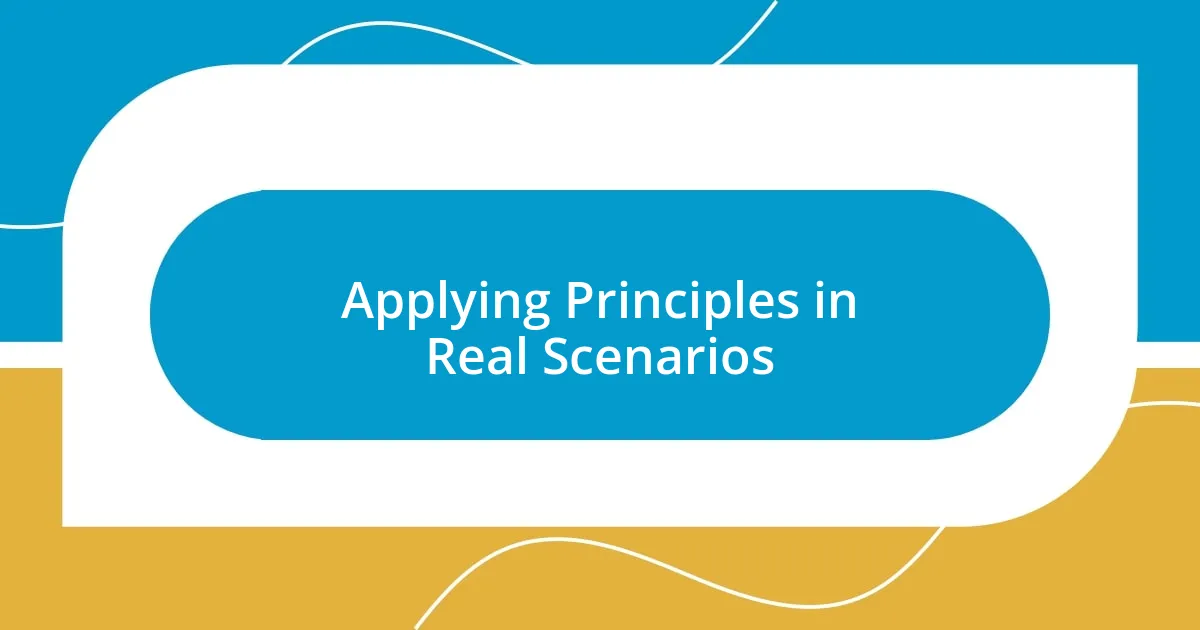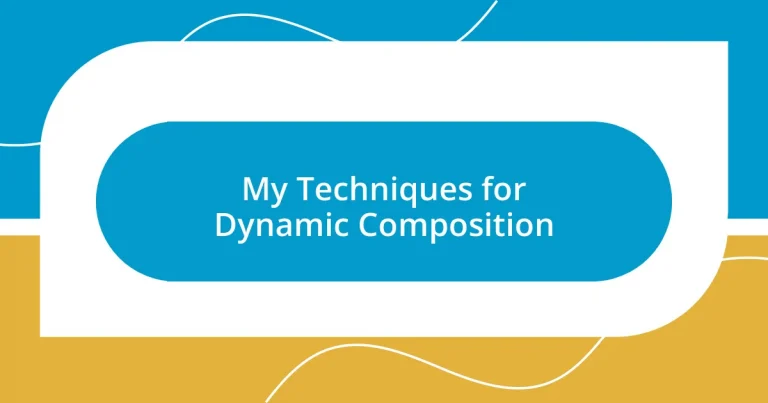Key takeaways:
- Dynamic composition enhances emotional engagement through elements like contrast, rhythm, and silence.
- Using lines in music can guide the listener’s experience, with horizontal, vertical, and diagonal lines creating varying emotional effects.
- Incorporating color in compositions adds depth and emotional resonance, transforming narratives and eliciting strong audience responses.
- Evaluating and refining compositions through distance, recordings, and feedback is crucial for improving flow and cohesion in music.

Understanding Dynamic Composition Techniques
Dynamic composition techniques are all about creating movement and ensuring that each element of a piece contributes to the overall energy. I remember the first time I experimented with layering sounds in a music project. The thrill of crafting intertwining melodies and rhythms made me realize how dynamic composition can elevate a piece beyond its basics—immediately pulling the listener in.
One crucial aspect of dynamic composition is contrast. Think about it: when you play with varying dynamics, you can evoke powerful emotions. I often find myself shifting from soft, intimate moments to grand, booming sections, almost as if I’m telling a story with my music. This push and pull not only keeps the audience engaged but also allows them to feel the highs and lows I intend to convey.
A dynamic piece can also benefit greatly from the use of silence. I’ve found that a well-placed pause can feel like a breath, allowing listeners to reflect before diving deeper into the next section. Have you ever noticed how silence can heighten anticipation? It’s those subtle moments that often leave the most lasting impact, drawing your audience into a more profound connection with the composition.

Elements of Dynamic Composition
Dynamic composition thrives on a few essential elements that work together to create a captivating experience. One element I often focus on is rhythm. When I think back to my first lively jam session, the infectious beat seemed to take on a life of its own, guiding us through each measure. The way specific rhythms can drive energy is something I cherish in every composition I create. It’s about finding that pulse that resonates with everyone in the room.
Here are some key elements that contribute to dynamic composition:
– Contrast: Juxtaposing loud and soft sections to evoke emotion.
– Rhythm: Utilizing varying tempos to create tension and movement.
– Silence: Implementing pauses for reflection and anticipation.
– Textural Layers: Building complexity through multiple instruments or voices.
– Melodic Development: Evolving melodies that capture attention and journey through the piece.
Reflecting on my own experiences, I’ve learned that each of these elements, when thoughtfully combined, breathes life into the music, transforming simple ideas into compelling stories.

Using Lines to Create Movement
Using lines in composition is a fascinating way to guide the listener’s eye and ear, creating a sense of movement that breathes life into my work. For instance, when I was composing a piece designed to feel like a journey, I visualized lines that flowed from one section to the next. These lines helped me transition seamlessly between contrasting themes, allowing the audience to feel they were moving from one emotional landscape to another.
I’ve noticed that horizontal lines can evoke a sense of calm and stability, while vertical lines tend to create tension and upward movement. Once, during a live performance, I played a series of rising scales that felt like a vertical climb. The audience could sense the urgency, almost like they were on this exhilarating journey with me. This concept of spatial lines translating into musical phrases is something I cherish; it makes the entire experience more dynamic and relatable.
Moreover, diagonal lines can introduce a sense of action and excitement. I experimented with this in one of my compositions by juxtaposing rapid violin runs with steady piano chords, which felt like a race against time. Have you ever felt that rush of adrenaline in music, where every note propels you forward? That’s the power of movement through lines, and it’s a technique I continue to explore in my compositions.
| Line Type | Effect on Movement |
|---|---|
| Horizontal | Creates calm and stability |
| Vertical | Evokes tension and upward movement |
| Diagonal | Introduces action and excitement |

Implementing Balance and Contrast
Implementing balance and contrast in composition is like painting with sound. I remember a time during a late-night creative session when I played a soft, gentle passage on the piano, only to sharply punctuate it with a thunderous orchestra swell. The contrast wasn’t just audible; it grabbed everyone’s attention and elevated the emotional stakes of the piece. Isn’t it amazing how a single shift in dynamics can transform the entire atmosphere?
Moreover, achieving balance while exploring contrast requires careful attention to the placement of elements. I often think of it as a seesaw – if one side is too heavy with sound, it can overshadow the delicate nuances on the other side. Once, while performing a piece filled with both intricate solos and rich choruses, I worked hard to ensure that one didn’t drown out the other. This delicate balance made the performance not just a showcase of skill, but a true collaboration of voices and instruments. It left me wondering, how much can we really express when we give equal weight to light and dark moments in our compositions?
In my experience, contrast can also emerge from the unexpected. I once composed a piece that shifted dramatically between two contrasting genres—classical and jazz. The surprise in the juxtaposition lit a spark in the audience, leading to an electric energy throughout the venue. Utilizing contrast this way creates a dialogue within the music. It makes me ask: how often do we overlook the power of surprising our listeners? Balancing these elements not only engages an audience but also keeps my creative spirit alive and thriving.

Incorporating Color for Impact
Incorporating color into my compositions is like adding brush strokes to a canvas; it intensifies the emotional landscape. I vividly recall a time I experimented with a vivid palette of tonal colors in a piece inspired by nature. By layering rich harmonies with bright melodies, I could evoke the feeling of sunlight breaking through the trees—something so tangible that the audience almost felt the warmth wash over them. Doesn’t it seem remarkable how certain combinations of notes can ignite real emotions?
I’ve found that using contrasting colors not only enhances the auditory experience but also shapes the overall narrative. During one performance, I decided to juxtapose minor and major tonalities, creating a bold, almost cinematic shift. The impact was immediate—listeners were drawn into a sense of conflict, much like watching a storm give way to a serene sunrise. Have you ever experienced a moment where harmony and dissonance collide, leaving you breathless? It’s in these moments that I truly appreciate the power of color in music.
Moreover, sometimes, it’s the subtleties of color that leave the most profound impressions. Once, while working on a delicate solo, I opted for soft, pastel hues of sound, using gentle dynamics to convey vulnerability. The room fell silent as the audience leaned in, connected by the quiet tension woven through each note. Isn’t it fascinating how music can paint emotions with such depth? This exploration of color in my compositions isn’t just a technique; it’s a journey into the soul of my art.

Applying Principles in Real Scenarios
Applying the principles of dynamic composition in real scenarios often feels like crafting a story with sound. I remember a recent performance where I took an otherwise straightforward piece and introduced a sudden crescendo. The audience’s startled reaction transformed the atmosphere, highlighting how dynamic shifts can inject life into familiar melodies. Have you ever noticed how a simple change in volume can completely alter the narrative of a piece?
Another instance that stands out to me is when I worked with a small ensemble. We explored the idea of varying dynamics within our improvisation, making room for each musician’s voice. This deliberate push and pull of intensity forged an organic conversation among us, captivating the listeners as they leaned into the nuances. Isn’t it fascinating how dynamic principles can create a sense of connection in live performances, building an invisible bridge between the musicians and the audience?
I’ve also experimented with silence and its powerful impact in my compositions. During one quiet moment in a recent piece, I chose to drop to almost inaudible whispers before bursting into vibrant chords. The silence acted as a powerful contrast, heightening the listener’s anticipation. Have you ever felt that exhilarating rush as silence wraps around you, only to be broken by a wave of sound? It’s moments like these that remind me how essential dynamic principles are in crafting experiences that resonate deeply with the audience.

Evaluating and Refining Your Composition
Evaluating your composition is an essential step that I can’t stress enough. I often find myself stepping back after the initial creation, looking at the piece with fresh ears. During one evaluation session, I discovered certain sections felt rushed. Slowing down those elements not only improved the flow but also allowed the audience to engage more deeply with the piece. Have you ever experienced that moment of clarity after a little distance from your work?
In my practice, I use recordings as a powerful tool for refinement. Listening back gives me critical insights that I wouldn’t catch in the moment. For instance, after recording a recent piece, I realized that some harmonies were clashing in ways I hadn’t intended. By adjusting those parts, I was able to create a smoother, more cohesive sound. Can you relate to that feeling of surprise when you hear something differently from what you expected?
Feedback from others also plays a pivotal role in my evaluation process. I recall sharing a composition with a fellow musician who pointed out elements that felt too dense. Their perspective helped me appreciate the importance of space and silence within the music. Striking that balance transformed the piece entirely. Have you thought about seeking external feedback in your work, and how it might open new avenues of creativity?














